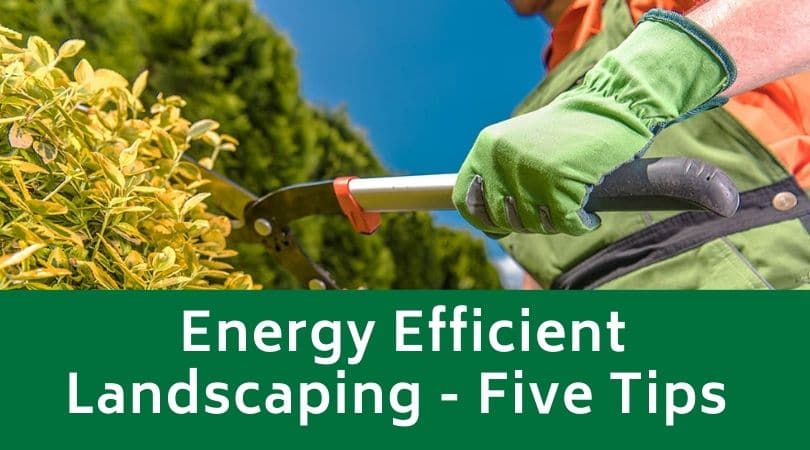
Green landscaping is exploding in popularity around the world as one of the biggest design trends. Going green with your landscaping, better known as eco-landscaping, means making it more energy-efficient. You create, design, and maintain your landscape in a way that saves you time, money, and energy. Energy-efficient landscapes offer a lot of benefits for you, but they also nurture wildlife while reducing water, soil, and air pollution. There are several things you can do to transform your landscape into an energy-efficient one, and we’re going to walk you through a few options below.
1. Add Trees for Natural Shade
Solar heat that gets absorbed through your roof or windows can increase your cooling costs. Shade stops a large portion of this heat from reaching these areas, and this helps reduce the time you have the air conditioner running. You can plant deciduous trees on the west and south-facing sides of your home is one great way to increase the natural shade levels. The leafy green canopy will shade your home in the summer, and the bare branches will allow the sun’s warmth through in the winter.
2. Hedges Create Windbreaks
Correctly sourced, selected, planted, and maintained hedges create excellent windbreaks that can reduce your overall heating costs. If you’re worried about chilly winter winds, plant these hedges on the northwest and north-facing sides of your property. Your windbreaks shouldn’t be more than one or two tree heights from your home to get the most protection possible. This can be far enough away to create a natural privacy screen for your backyard too.
3. Plant Ground Cover to Prevent Radiant Heat
When the sun beats down on the ground, it produces radiant heat that rises back up and makes the area warmer. To combat this, you can plant shrubs or plants that sit low to the ground and help to deflect the heat. Some do better in shaded areas, but there are many full sun varieties available that will sprawl over your yard and keep it cooler.
4. Reduce Your Water Needs
Watering your yard or landscape enough to keep it healthy while making sure you don’t waste water is a delicate balancing act. You should make sure that your irrigation system is in good shape at the start of the spring months. It’s also a good idea to find out exactly how much water your plants need to stay healthy and thriving. Combining these two factors will allow you to save on your water costs.
5. Use Energy-Efficient Lighting
If you have to have lights on in your landscaping, choose energy-efficient options. If you live in a sunny area, you could even check into solar lights. These types of lights will help to cut into your overall energy costs, and this is especially true if you have motion sensor lighting in place. Just make sure that your lighting will survive exposure to the elements without breaking down.
Contact Evergreen Landscaping
Would you like to create an energy-efficient landscape in your own yard? Maybe you already started the process, and you have questions or concerns. Either way, you can reach out and get in touch with our friendly and professional staff today.
